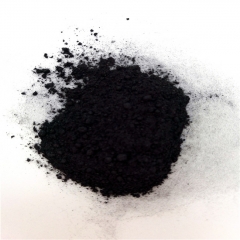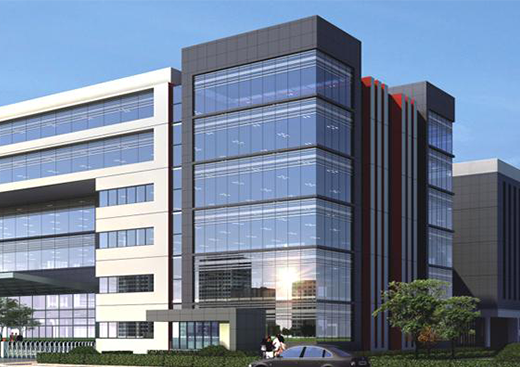

Boron carbide has excellent properties and is widely used. The hardness of boron carbide is second only to diamond and cubic boron nitride. It has many advantages, such as high melting point, low density, high strength, wide neutron absorption cross section, excellent thermoelectric properties and good mechanical stability. And we can use it in aerospace, defense, nuclear energy and wear-resistant technology.

At present, carbothermic reduction is the main method of industrial production of boron carbide. In addition, the production methods of boron carbide include self-propagating thermal reduction, mechanochemical methods, direct synthesis, and sol-gel methods.
1. Carbothermal reduction
The carbothermic reduction method usually uses boric acid or boric anhydride as a raw material, and carbon as a reducing agent for high-temperature reduction in an electric arc furnace. At present, this method is the main method for industrial production of boron carbide, and has the advantages of simple reaction and low cost.
Using boric acid and carbon black as raw materials, keep it at 1700-1850℃ for 0.5-1.0 h. The high-purity boron carbide powder is calcined. The carbon content is 20.7%, which is close to the theoretical value. However, the disadvantage of this method is that it needs to be carried out at a higher temperature, which consumes a lot of energy. The production of boron carbide is easy to agglomerate and needs to be crushed. The product is mixed with unreacted carbon, which needs to be removed by subsequent processing.
2. Self-propagating thermal reduction
The self-propagating thermal reduction method uses carbon black (or coke) and boric acid (or boric anhydride) as raw materials, and active metal substances (usually mg) are used as reducing agents or fluxes, and the heat generated by the self-propagating combustion reaction is used as the metal substance For the synthesis of boron carbide. The reaction equation is as follows: 6mg + C + 2b2o3 = 6mgo + B4C
The method has the advantages of low initial reaction temperature (1000-1200°C), energy saving, fast reaction, and simple equipment. The synthesized B4C powder has high purity and excellent particle size (0.1-4.0μm), and usually does not need to be crushed.
Jiang et al. used Na2B4O7, Mg and C as raw materials. The particle size of the B4C powder prepared by self-propagating thermal reduction is 0.6 μm. However, the MgO produced by the reaction must be removed by an additional process, and it is challenging to eliminate it.
3. Machinery
The chemical mechanochemical method uses boron oxide powder, magnesium powder and graphite powder as raw materials, and uses the rotation or vibration of the ball mill to impact the harder ball milling medium, vigorously grind and agitate the raw materials, and induce chemical reactions. The reaction is carried out at a temperature slightly higher than room temperature to prepare boron carbide powder. The preparation temperature of this method is low, and it is a very promising preparation method.
The B4C powder with a mass ratio of B2O3:C:Mg of 10:1:11 was prepared by mechanochemical method. The particle size of the powder is 100-200nm. According to yogurt and others, the best quality ratio of Mg:C is 9:2-10:1. However, the by-product MgO of this method is difficult to eliminate, and ball milling usually takes a long time.
4. Direct synthesis
The production method of direct boron carbide is prepared by thoroughly mixing carbon powder and boron powder and reacting in a vacuum or inert atmosphere at 1700-2100°C. The boron carbide prepared by direct synthesis has high purity, and the B/C ratio in the reaction is easy to control. Still, the preparation method of boron carbide used for synthesis is relatively complicated and costly. Therefore, this method has some limitations.
5. Sol-gel method
The sol-gel method (Sol-gel) refers to the technique of solidifying inorganic or metal alkoxides through solutions, sols and gels, and then performing heat treatment to obtain stable compounds. The advantages of this method are that the raw material mixture is more uniform, the reaction temperature is low, the product volume is large, and the particle size of the B4C powder is small.
Mix boric acid and citric acid under the conditions of pH = 2-3 and 84-122. Can form a transparent and stable gold gel. When heated to 700 degrees in a vacuum furnace, a porous soft boric acid citric acid precursor can be obtained. The precursor is maintained at 1000-1450 under a vacuum of 2 hours, and a B4C powder with a particle size of about 2.25 M can be obtained.
Overview of boron carbide B4C powder
Boron carbide has the characteristics of low density, high strength, good high temperature stability, and good chemical stability. Therefore, it is widely used in wear-resistant materials, ceramic reinforcement phases, especially lightweight armor, reactor neutron absorbers, etc. In addition, compared with diamond and cubic boron nitride, boron carbide is easy to manufacture and low in cost, so it is more widely used. In some places, it can replace expensive diamonds, usually used for polishing, grinding, drilling, etc.
B4C powder has the characteristics of high purity, small particle size distribution, and large specific surface area. B4C powder is a synthetic superhard material with a hardness of 9.46; a microhardness of 56-6200Kg/mm2, a ratio of 252g/cm3, and a melting point of 2250 degrees Celsius.
Chemical characteristics, non-magnetic, high temperature and low temperature resistance, strong acid, strong alkali. In addition, boron carbide can effectively absorb neutrons, does not emit gamma rays harmful to the human body, and does not form secondary radiation pollution. The hardness is only lower than diamond. Boron carbide is one of the most stable substances to acid, and it is stable in all concentrated or dilute acid or alkali aqueous solutions. Boron carbide is basically stable below 800°C in an air environment. The boron oxide formed by oxidation at high temperature is lost in the gas phase, making it unstable and oxidized to form carbon dioxide and boron trioxide.
Boron carbide can absorb a large number of neutrons without forming any radioactive isotopes. It is an ideal neutron absorber for nuclear power plants. Neutron absorbers mainly control the rate of nuclear fission. Boron carbide is used in nuclear reactors. Made into controllable rods, but sometimes made into powder due to increased surface area.
Application of boron carbide B4C powder
Control nuclear fission: It can absorb a large number of neutrons without forming any radioactive isotopes. It is an ideal neutron absorber for nuclear power plants. Neutron absorbers mainly control the rate of nuclear fission. Boron is mainly made into controllable rods in the field of nuclear reactors, but sometimes it is made into powder due to the increase in surface area.
Abrasive: Because boron carbide has been used as a coarse abrasive for a long time. Because of its high melting point, it is not easy to cast into artificial products, but the powder can be smelted into simple shapes. high temperature. Used for grinding, grinding, drilling and polishing hard materials such as cemented carbide and gems.
Coating paint: Boron carbide can also be used as a ceramic coating for warships and helicopters. It is light in weight and can resist the penetration of armor-piercing projectiles through the hot-press coating, forming an overall defense layer.
Nozzle: Boron carbide can be used as a spray gun nozzle in the ordnance industry. Boron carbide is extremely hard and wear-resistant, does not react with acid and alkali, is resistant to high temperature/low temperature, and is resistant to high pressure. Boron carbide is also used to make metal borides and smelt sodium-boron, boron alloys and special welding.
Price of boron carbide B4C powder
The price of boron carbide varies randomly with factors such as production costs, transportation costs, international conditions, exchange rates, and market supply and demand. Tanki New Materials Co., Ltd. aims to help various industries and chemical wholesalers find high-quality, low-cost nanomaterials and chemicals by providing a full set of customized services. If you are looking for boron carbide, please feel free to contact us for the latest boron carbide prices.
Supplier of Boron Carbide B4C Powder
As a global boron carbide supplier, Tanki New Materials Co., Ltd. has extensive experience in the performance, application and cost-effective manufacturing of advanced engineering materials. The company has successfully developed a series of powder materials (including chromium carbide, aluminum carbide, titanium carbide, etc.), high-purity targets, functional ceramics and structural devices, and provides OEM services.
| Specifications of Boron Carbide B4C powder | |||||||
| Item | Purity | APS | SSA | Color | Morphology | Zeta Potential | Bulk Density |
| B4C powder | >99% | 50nm | 42m2/g | Black | hexagonal | -26mV | 0.1g /cm3 |
| Boron Carbide Properties | |
| Other Names | B4C, B4C powder, black diamond, boron carbide powder, |
| boron-carbon refractory ceramic | |
| CAS No. | 12069-32-8 |
| Compound Formula | B4C |
| Molecular Weight | 55.26 |
| Appearance | Gray to Black Powder |
| Melting Point | 2763 °C |
| Boiling Point | 3500 °C |
| Density | 2.52 g/cm3 |
| Solubility in H2O | Insoluble |
| Electrical Resistivity | 0 to 11 10x Ω-m |
| Poisson's Ratio | 0.17-0.18 |
| Tensile Strength | 350 MPa (Ultimate) |
| Thermal Conductivity | 31 to 90 W/m-K |
| Thermal Expansion | 4.5 to 5.6 µm/m-K |
| Vickers Hardness | 26 Mpa |
| Young's Modulus | 240 to 460 Gpa |
| Exact Mass | 56.037222 |
Tanki New Materials Co.Ltd Aims to help All industries and Chemical Wholesalers to find high quality, cheap price nano materials and chemicals by providing turn-key customize manufacturing services.
As a trust-worthy
global nano-materials and chemicals manufacturer, Tanki New Materials Co.Ltd has been successfully supplying big and small brands with customized nano materials and chemical products in bulk or small quantities.
Tanki New
Materials Co.Ltd has rich experiences in the properties, applications, and cost-effective manufacturing of advanced and engineered materials. The company has successfully developed a series of powder materials (including oxides, carbides,
nitrides, single metal, etc.), high-purity targets, functional ceramics, and structural devices. OEM service is available.
Our innovative, high-performance materials are widely used in many industries, including but not limited
to the automotive, electrical, electronics, information technology, petrochemical, oil, ceramics, paint, metallurgy, solar energy, and catalysis.
Based in the center of China, the company has rich resources and chemical product
manufacuturing chains to make sure your cost remain as low as your specifications demand.
The company provides following products such as providing super high quality chemicals and Nano materials such as graphite powder,
boron powder , zinc sulfide , nitride powder, Calcium nitride, Ca3N2, 3D printing powder, and so on.

Ask a quote for the latest price and one of our team members will respond as soon as possible. Fields marked with * are required.
